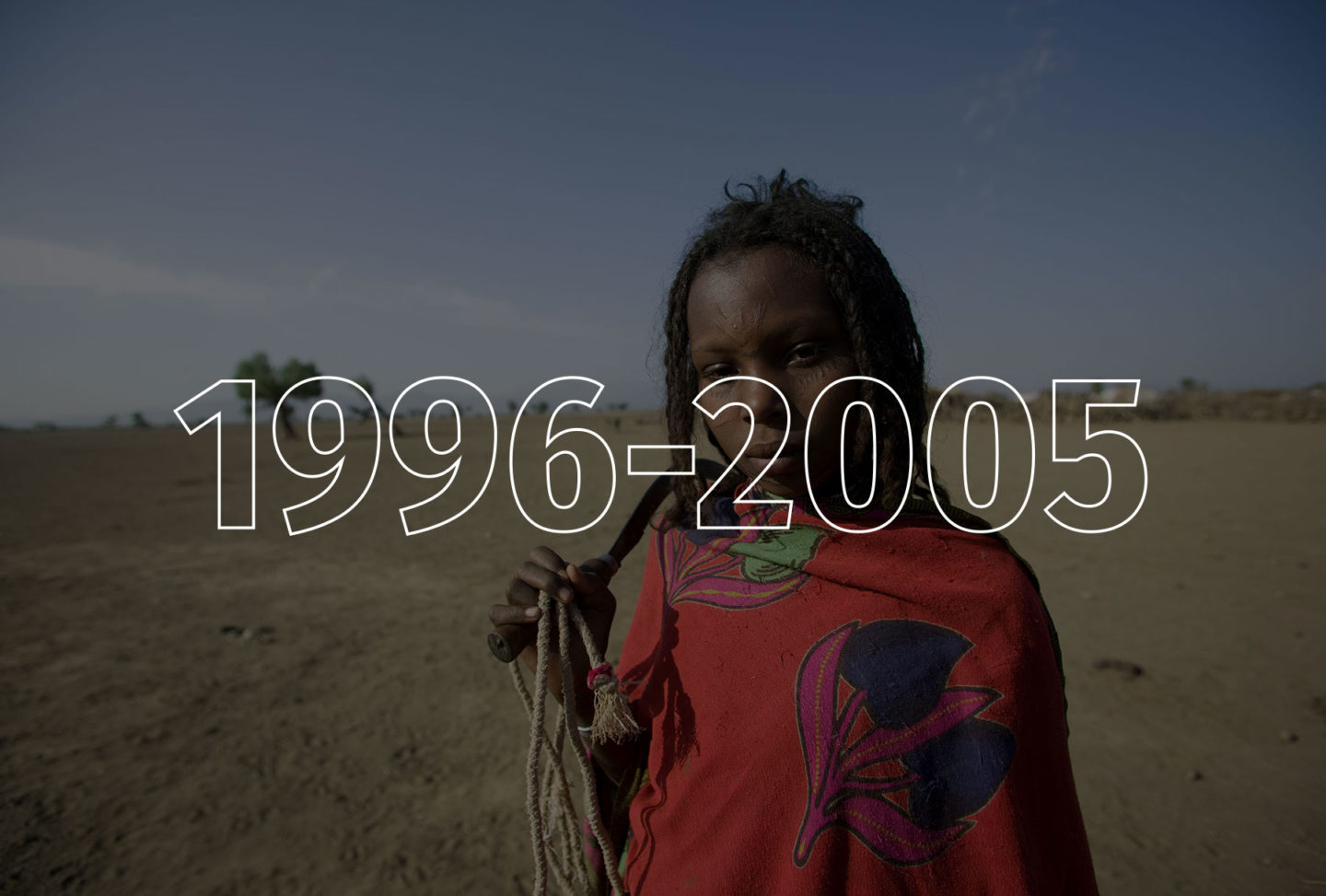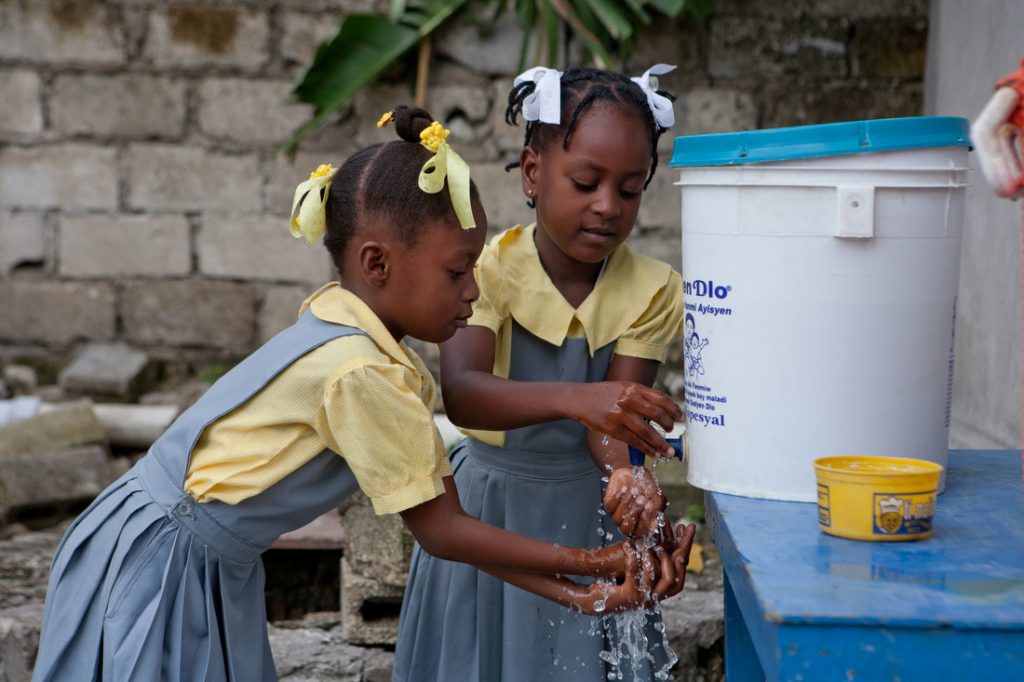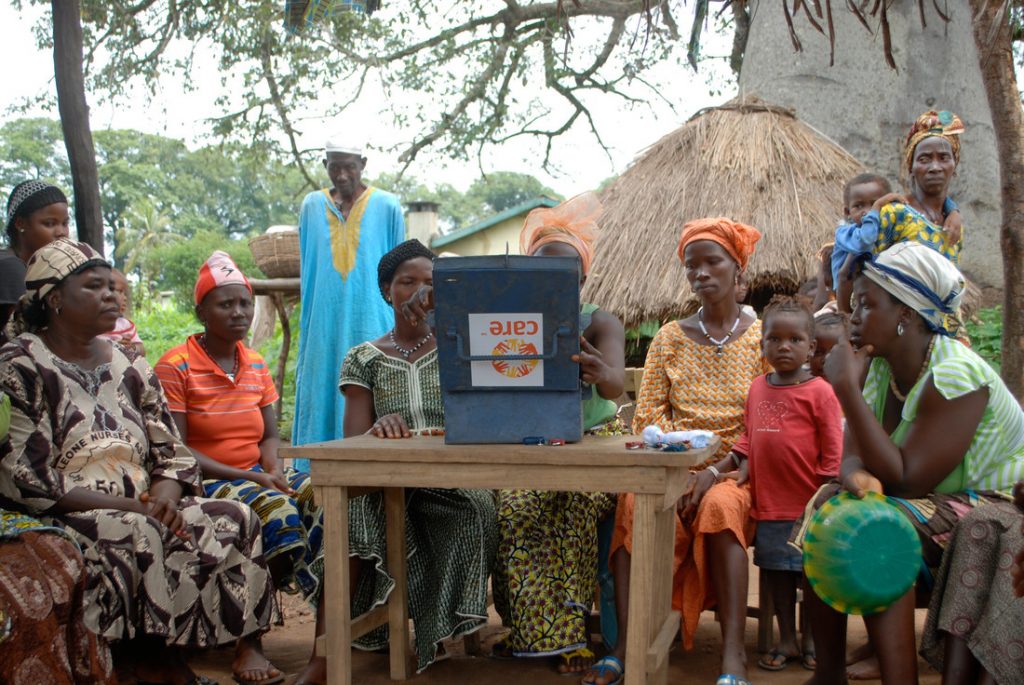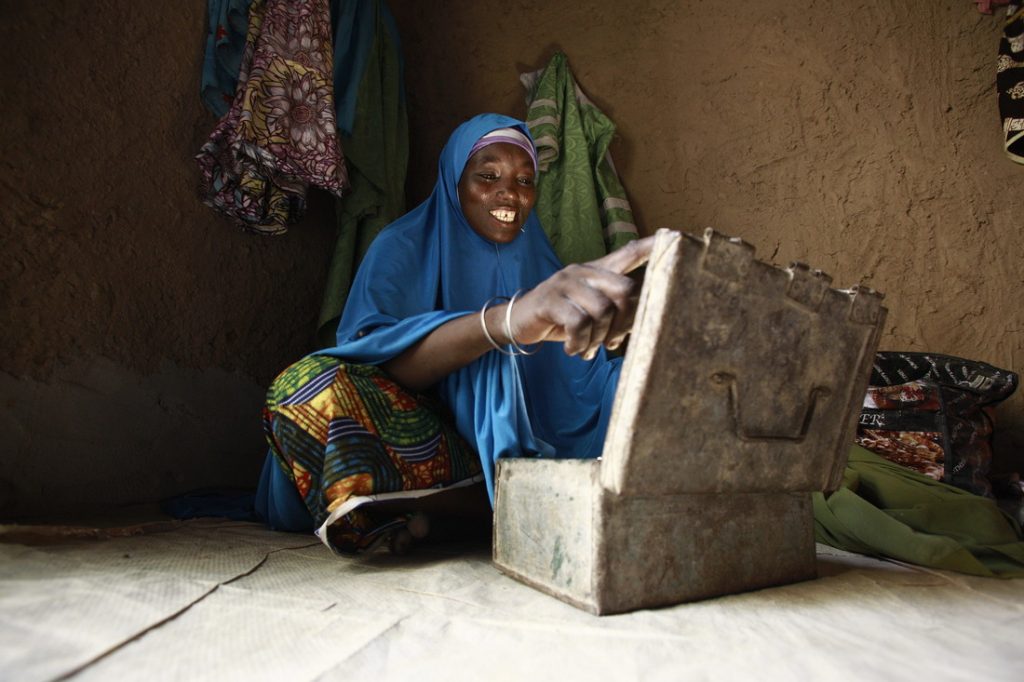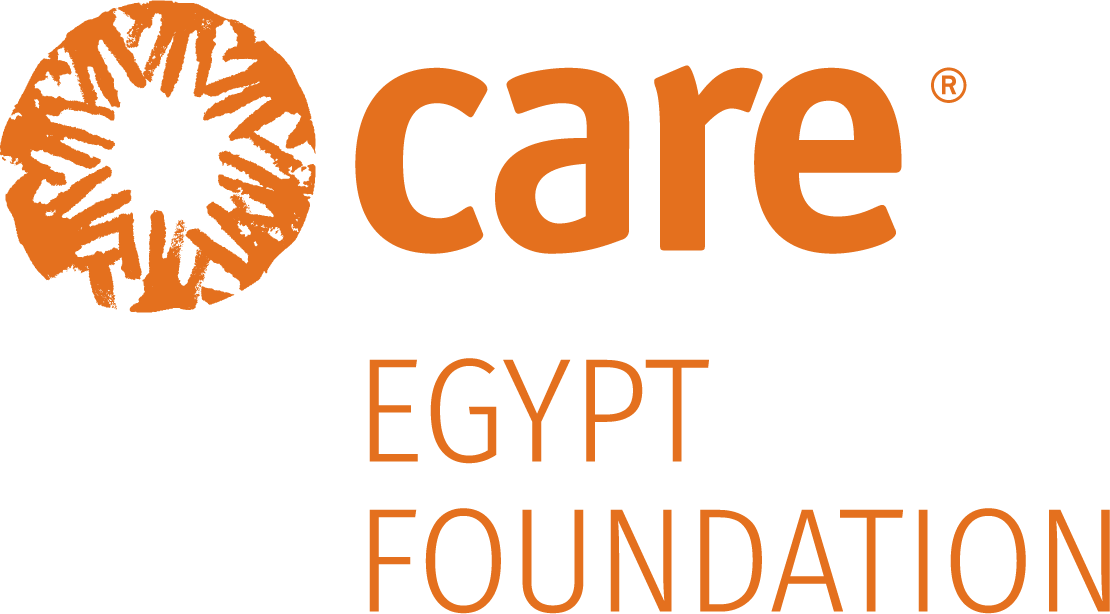Complex humanitarian emergencies continue to mark the post-Cold War Era. Economic collapse and civil conflict pave the way for famine, violence, the spread of infectious diseases and refugee movements.
CARE takes up the challenge of tackling poverty at the root through a platform of empowerment, equity, sustainability and strengthening civil society. In 1999, CARE pioneers its accelerated education program for girls in India who are taken out of school for financial or other family-related reasons.
“The organization seeks a world of hope, tolerance and social justice, where poverty has been overcome and people live in dignity and security. We will be known everywhere for CARE’s unshakable commitment to the dignity of people.”
– CARE’s current vision focusing on human rights and causes of poverty, adopted in 2000
In 2001, the organization changes its logo from the variation on its original CARE “stamp” to the “circle of hands” still in use today.
With more than 90 percent of CARE staff working in the countries they are from, CARE fosters diversity and local innovations. In 2000, CARE develops an approach to education programming in Cambodia that focuses on adolescent girls and pilots working with local and national governments to change policies that lead to poverty and exclusion. This eventually drives CARE’s global education portfolio that reaches millions of underserved girls worldwide.
In 2003, CARE Thailand became the Raks Thai Foundation, the first CARE member governed from a developing country to prioritize local voices in development.
In 2004, USAID funds CARE’s SHOUHARDO program in Bangladesh. The success of the initiative to prevent childhood stunting from malnutrition would go on to stun the agency, proving twice as effective as a typical intervention, with much of the gains attributed to the program’s efforts to empower women.
At the end of 2004, thirty countries are in conflict, and the threats of terrorism, the human toll of war and the HIV/AIDS pandemic continue to challenge CARE staff worldwide, but the organization continues its pursuit of a world free from poverty and social injustice through community development, emergency response and rehabilitation programs.
CARE begins 2005 with a strategic focus on its core programming: basic and girls’ education, emergency response, HIV/AIDS, and water and sanitation. The organization collaborates to create the ONE Campaign, develops the CARE Action Network of advocates nationwide, plays an important role in pressing the U.S. government to fulfill its commitment to the Millennium Development Goals, and appears before Congress to support post-Tsunami aid and the global water crisis.
Also in 2005, after the kidnapping and tragic murder of CARE’s country director in Iraq, we halted operations in that country – which did not resume until 2014 with our response to the displaced persons crisis in the Kurdistan region of northern Iraq.


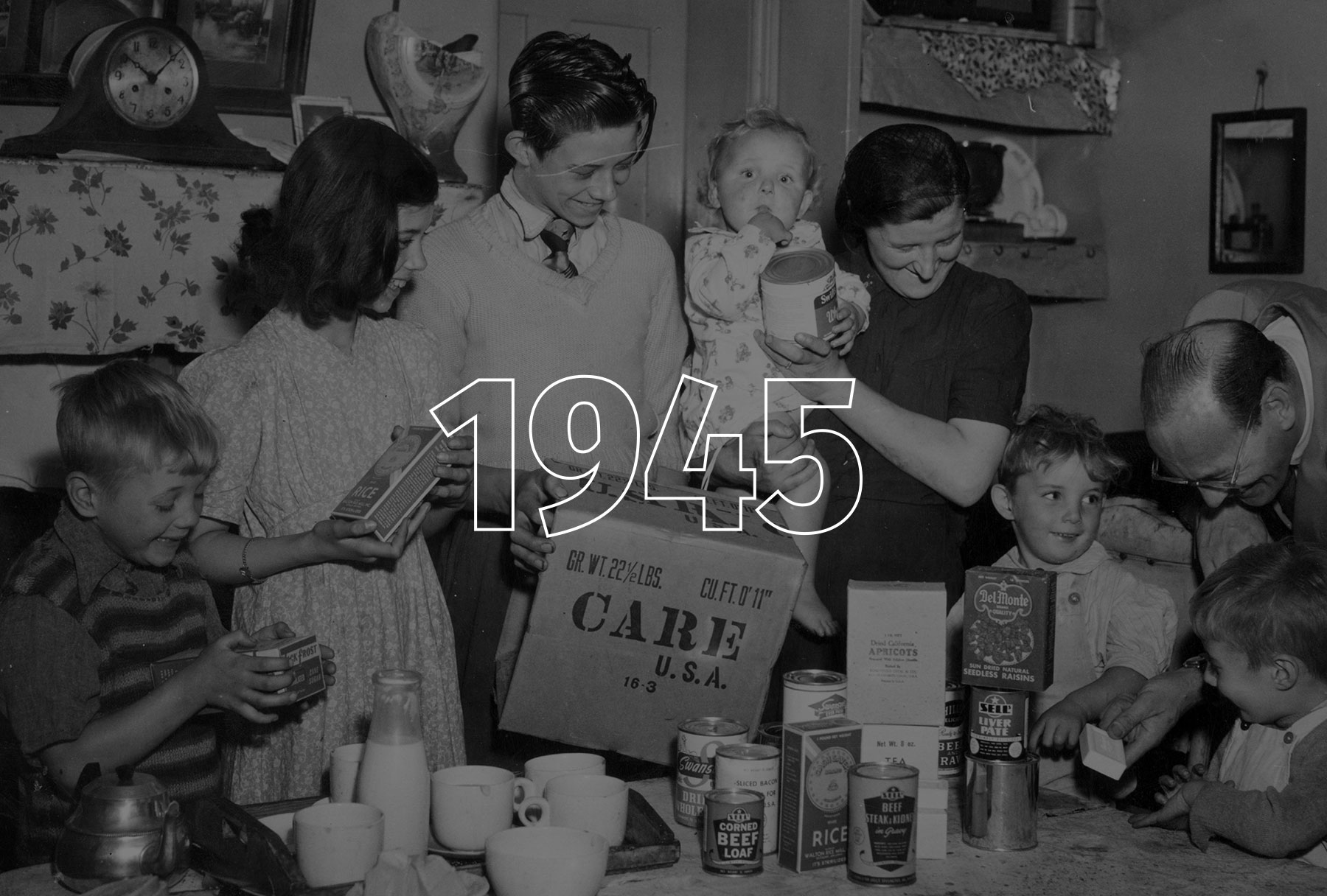
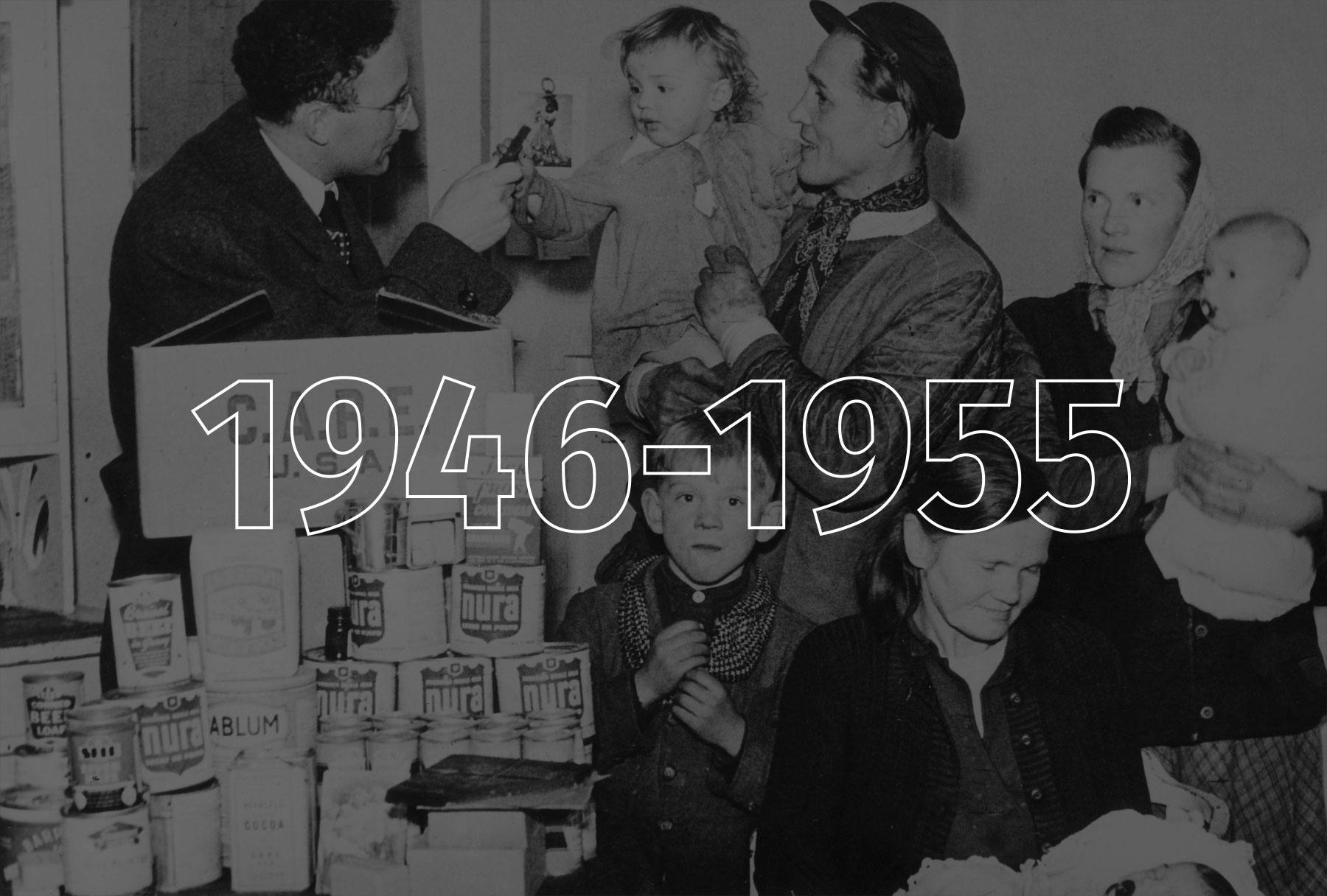
 Arrival of the first CARE packages in Le Havre, France. The packages were greeted by CARE cofounder Dr. Lincoln Clark.
Arrival of the first CARE packages in Le Havre, France. The packages were greeted by CARE cofounder Dr. Lincoln Clark.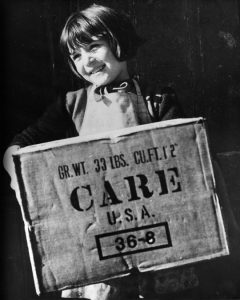 Arrival of the first CARE packages in Le Havre, France. The packages were greeted by CARE cofounder Dr. Lincoln Clark.
Arrival of the first CARE packages in Le Havre, France. The packages were greeted by CARE cofounder Dr. Lincoln Clark.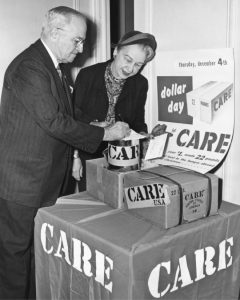 Arrival of the first CARE packages in Le Havre, France. The packages were greeted by CARE cofounder Dr. Lincoln Clark.
Arrival of the first CARE packages in Le Havre, France. The packages were greeted by CARE cofounder Dr. Lincoln Clark.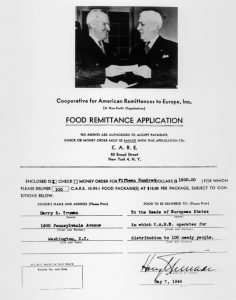 Arrival of the first CARE packages in Le Havre, France. The packages were greeted by CARE cofounder Dr. Lincoln Clark.
Arrival of the first CARE packages in Le Havre, France. The packages were greeted by CARE cofounder Dr. Lincoln Clark.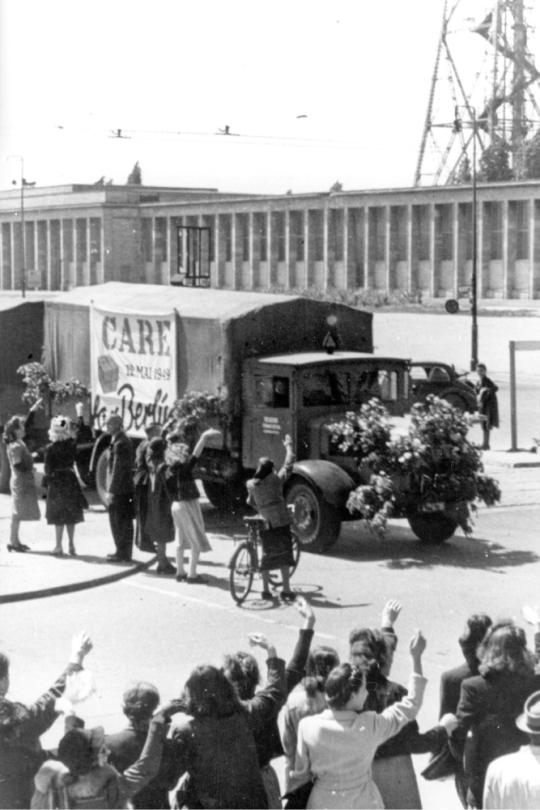 When Soviet troops blockaded Berlin in 1948, the first major crisis of the Cold War ensued. The US responded with the now famous airlift, which included 250,000 CARE packages – 60% of all relief sent to the city. When the blockade was lifted in May 1949, CARE trucks, the first vehicles to enter the city, were greeted with roaring welcome by the crowds of Berliners.
When Soviet troops blockaded Berlin in 1948, the first major crisis of the Cold War ensued. The US responded with the now famous airlift, which included 250,000 CARE packages – 60% of all relief sent to the city. When the blockade was lifted in May 1949, CARE trucks, the first vehicles to enter the city, were greeted with roaring welcome by the crowds of Berliners.


 President John F. Kennedy hands a pen to R. Sargent Shriver, the first director of the Peace Corps, after officially signing the Peace Corps Act on September 22, 1961. CARE was asked to help train the first volunteers before their inaugural mission to Latin America.
President John F. Kennedy hands a pen to R. Sargent Shriver, the first director of the Peace Corps, after officially signing the Peace Corps Act on September 22, 1961. CARE was asked to help train the first volunteers before their inaugural mission to Latin America.





